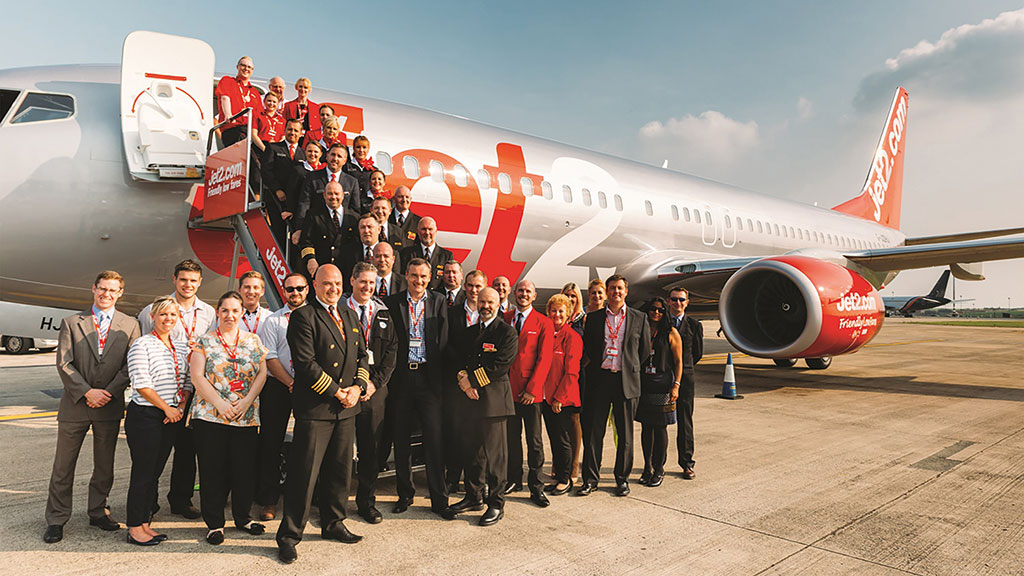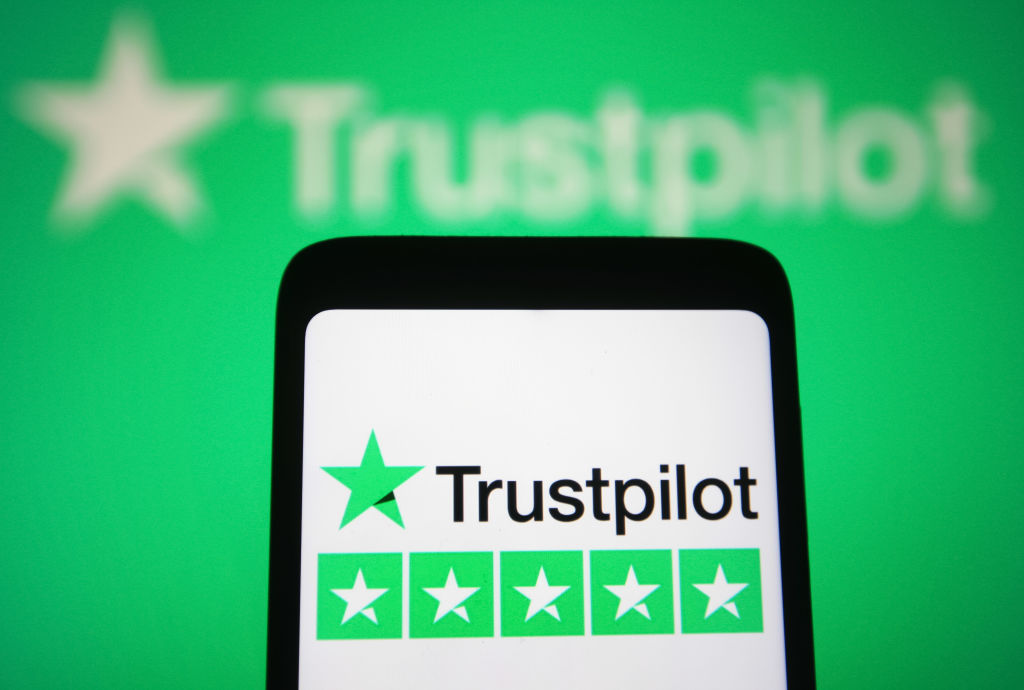The end of outsourcing? Why companies are taking back control
Until fairly recently, corporations did everything in-house rather than delegate activities to others. Now the “vertical integration” model is making a comeback. That spells opportunity, says Richard Beddard.


Over the past two decades, outsourcing production has been one of the key trends in global business.But it is a relatively new phenomenon. In the early 20th century, manufacturers using the new techniques of mass production had to build their own supply and distribution networks because the alternative – external suppliers and distributors of sufficient scale – did not, on the whole, exist.
These firms were “vertically integrated”: they performed most, if not all, of the activities required to bring a product to market because they had to. But as technology advanced and the global economy became more sophisticated, the tide began to turn and by the end of the 20th century the fashion was to “de-integrate”. Companies preferred to outsource less profitable activities to specialists who could do them more efficiently and focus on where they could add more value: making distinctive products and services that would be more lucrative.
The corporate tide is turning
The poster child for de-integration and global supply chains is Apple, which famously outsources the assembly of the iPhone. A closer look, however, suggests that the story is more nuanced. Though Apple does not assemble its products, it is a vertically-integrated company in many respects. It provides the operating system, App Store, the marketplace for services that make the phone functional and some of those services, such as iTunes.
MoneyWeek
Subscribe to MoneyWeek today and get your first six magazine issues absolutely FREE

Sign up to Money Morning
Don't miss the latest investment and personal finances news, market analysis, plus money-saving tips with our free twice-daily newsletter
Don't miss the latest investment and personal finances news, market analysis, plus money-saving tips with our free twice-daily newsletter
You may well have bought an iPhone directly online or from a physical Apple Store, where you can also get support and repairs. Since many of the components in a mobile phone are fairly generic and the capacity to manufacture electronic devices in huge quantities is already established in the Far East, there would be little to gain and much to lose by taking production in-house. But, in common with many of its peers, Apple seeks to control the experience of its customers from design, through software, to sales and service. This is where Apple can add most value.
When vertical integration works for you...
Today, companies are thinking again about reintegration. Technology giants such as Tesla, which sells electric cars through its own outlets, and streaming service Netflix, which is making films and TV programmes, are behaving like the giants of yore. So-called “fast fashion” suppliers such as Zara take manufacturing in-house to reduce the time it takes to respond to new fashion trends. The risks inherent in lengthy supply chains have become more apparent with time. The more companies a product passes through before it reaches the customer, the more places the chain can be broken or costs introduced, either due to problems at individual suppliers, or because of threats such as trade barriers and Covid-19, which has closed iPhone factories in China. Sometimes managing complex supply chains is more onerous than doing the work in-house.
When customers require very high-quality standards, a company may decide the only way to comply is by taking overall control. When you’re selling trench coats for over £1,000 and handbags for little less, pretty much everything about them must be perfect – the product, the in-store or online experience and the story marketers tell about them. So luxury-goods companies such as Burberry vertically integrate to guarantee quality and justify the price tag.
If supply of a material required for production is restricted, a more vertically-integrated approach makes sense. Churchill China, a manufacturer of tableware for the hospitality industry, is dependent on a particular type of clay to manufacture hard-wearing plates and bowls. The manufacturing processes it has developed over centuries using this clay enable it to make robust tableware cheaply and distinguish it from competitors abroad, which explains why, in 2019, the company took control of its supplier.
Companies vertically integrate when their customers or suppliers are in a stronger competitive position. When Treatt realised multinational flavour houses were increasingly sourcing citrus oil directly from fruit-juice processors and by-passing distributors like itself, it went on the offensive, inventing uniquely flavoursome ingredients and combinations of ingredients it could sell directly to the flavour houses’ customers, beverage companies such as Pepsi and Coca-Cola. As Treatt has increased the number of “value added” products it sells, it has earned higher and more stable profits, giving investors the confidence to stump up the cash to part-fund the next phase in its evolution, a new “science-led” headquarters.
... and when it works against you
The downside of vertical integration is the cost. Vertically-integrated companies must finance numerous activities, which often requires high fixed costs, such as factories, equipment, vehicles and shops. When demand falls, even temporarily, it is difficult for vertically-integrated companies to reduce costs in line with revenue and the impact on profitability can be dramatic. If a company lacks the financial reserves to weather a recession, it will be forced to sell assets and make staff redundant at more cost in terms of money, morale and the firm’s reputation. Revenue would fall at de-integrated rivals too, of course, perhaps further if their businesses are less highly regarded, but more of their fixed costs are shared by suppliers.
For instance, in its report for the half-year to December 2019, Renishaw, a highly profitable vertically-integrated manufacturer of machine tools, said slowdowns in some of its markets and trade tensions between the US and China meant revenue had fallen by 13% compared with the half-year ending in December 2018. Profit fell by 76%, though. Jitters over the outlook wiped 45% off the stock in a year.
Even though Renishaw has no debt and large cash reserves, it has had to close one of three manufacturing sites. Renishaw’s long-term prospects are auspicious: demand for its technology should increase because it helps manufacturers automate and vertical integration means it should capture the profit. It owns its own intellectual property, uses its own tools in manufacturing (giving it insight into how to improve them) and sells directly to manufacturers through offices around the world.
From a long-term investor’s point of view, then, financially robust and highly profitable vertically-integrated companies are a compelling prospect. As Renishaw’s recent experience illustrates, however, investors should be prepared to ride out some nasty short-term share-price dips. Here are my favourites to consider.
Dart Group
(Aim: DTG)
The demise of Thomas Cook in 2019 highlighted key differences between the business models of rival package-holiday companies. Both Tui, the UK’s biggest package-tour company, and On the Beach, the third-biggest, lost revenue because customers on package tours they had sold were unable to fly. Both companies had booked their customers on flights with Thomas Cook.
Tui does fly its own planes, but it sometimes uses other airlines. Online travel agents such as On the Beach do not operate planes. They just book passengers on scheduled flights, often with low-cost carriers such as Ryanair. The only major UK package-holiday company unaffected by the end of Thomas Cook was vertically-integrated Jet2holidays, which flies holidaymakers on its sister airline, Jet2.com. Jet2holidays was the UK’s second-biggest package tour operator even before Thomas Cook vanished. Founded after On the Beach, it has grown faster in terms of the number of passengers it is licensed to fly. When Jet2holidays says it takes you on holiday, it really does. Jet2holidays markets holidays to families and being in control of the flights means it can make life easier for passengers, providing family-friendly flight times, generous baggage allowances and in-resort check-in, for example, which cannot be replicated by its rivals. More than half of customers rebook with Jet2holidays within 18 months, testimony perhaps to an integrated experience.
Jet2holidays is the engine of fast-growing Dart, which also owns a much smaller logistics business. The group earned a fairly typical 13% return on capital, a key gauge of profitability, in the year to March 2019 and the shares look fairly valued on a debt-adjusted price/earnings (p/e) ratio of about 19.
Games Workshop
(LSE: GAW)
Games Workshop is the company behind Warhammer, a unique presence on the British high street. The stores are dedicated to a single hobby, Warhammer, which involves painting science-fiction and fantasy-themed model soldiers and associated props and using them to play out fantasy battles according to rules made up by the company. The battles are set in two imaginary universes with rich histories mythologised in countless books and magazines published by Games Workshop.
It is, perhaps, the most vertically-integrated company of all those mentioned in this article. Games Workshop manufactures models in Nottingham and operates two additional distribution hubs in Memphis, Tennessee and Sydney, Australia. From these it supplies its own stores, customers who order online and independent hobby stores. Over half of total revenue in 2019 was earned through Games Workshop’s own channels.
The company has experienced a dramatic surge in popularity in recent years. This is due to incremental improvements inspired by insights only possible because of Games Workshop’s deep-rooted relationship with its customers, from which it recruits store managers. It has changed the materials it uses to make more detailed models, relaunched games with simpler rules and new stories and launched Warhammer Community, a website that supports and markets the hobby. It also earns income from video-game developers, who license Warhammer’s characters and stories, and is planning a TV series.
Surging sales have led to an even more remarkable increase in profit due to the company’s fixed cost base. In 2019, Games Workshop earned a remarkable 45% return on capital, three times the return it earned a few years earlier. The shares are not cheap, though. They are on a debt-adjusted p/e ratio of 35 and recent sales of shares by directors suggest that, for now at least, the share price is finally catching up with expectations.
Greggs
(LSE: GRG)
Greggs bakes its own sausage rolls and pies and delivers them largely to its own outlets in towns, increasingly locating them where people work, such as industrial estates, rather than where they shop. About 10% of revenue and a slightly smaller proportion of profit comes from franchises, principally in transport hubs, such as railway stations and motorway services.
The company is nearing the end of a “once in a generation” investment programme designed to complete the transformation of a traditional bakery chain serviced by in-store and regional bakeries into a larger chain of fast-food outlets serviced by a centralised supply chain. Greggs claims the vertical integration aspect of the business plan enables it to operate more efficiently than competitors who keep food on shelves longer and charge higher prices.
It also helps Greggs innovate, putting new recipes on shelves faster, culminating last year in its popular Quorn-filled vegan sausage roll. The vegan roll is one reason the company expects to report bumper revenues in full-year results for the year to December 2019 when it announces its annual results in March.
Greggs’ return on capital has improved marginally since switching to food-on-the-go and a centralised supply chain, despite the extra capital it has been investing. In 2018 Greggs earned a return on capital of 14%, although the share price, £22.50, implies a full valuation. Greggs’ debt-adjusted p/e ratio is 30.
Victrex
(LSE: VCT)
Victrex manufactures PEEK, the lightest, strongest and most durable of polymers – so strong it can be used in applications previously reserved for metal. PEEK components weigh less and last longer than their metal counterparts. As a thermoplastic it is relatively cheap and easy to manufacture into components for a wide variety of applications, from medical implants to gears and car-brake components. Having invented PEEK in the 1970s, Victrex has continuously developed new grades of this polymer, enabling it to keep ahead of competitors and dominate the market. Today Victrex has more than 60% of global PEEK production capacity and supplies many proprietary grades and forms of the material. It is vertically integrating, buying component manufacturers or forming joint ventures with them to develop new applications, which the company says will enable it to grow faster.
New markets present new challenges, however. Victrex must persuade engineers and surgeons to use PEEK when they are accustomed to using metal. Medical applications, such as knee implants, must go through clinical trials and Victrex is finding it difficult to crack the fragmented dental market. Its programme to manufacture sub-sea oil pipes has been affected by reduced investment due to weak oil prices.
Inevitably, developing new markets requires patience, but Victrex is one of only a handful of PEEK producers, unique in its ability to develop high grades of this material and manufacture part-formed and finished components.
The company has published full-year results for the year to September 2019. It achieved a below-par return on capital of 21% owing to weak demand in two cyclical markets: vehicles and semiconductors. The shares look reasonably priced on a debt-adjusted p/e ratio of 23.
Vitec
(LSE: VTC)
Vitec is a manufacturer of equipment for various types of camera, including those used in motion-pictures and smartphones. It is vertically integrating, having recently acquired a supplier and launched websites to sell directly to retail customers. Photographers can buy Vitec’s consumer-focused brands, which sell tripods, bags, lighting equipment and motion-control rigs. Meanwhile, the acquisition of wireless video provider Amimon in November 2018 saw the vertical integration of a division that supplies professional filmmakers.
Amimon designs chipsets that enable instant wireless transmission of images to monitors used by directors and film crews, doing away with messy and time-consuming cables. Vitec, which also supplies broadcasters, has been a customer of Amimon since 2012, but it claims vertical integration will enable it to bring unique products to market quickly.
Full-year results are scheduled for March and although profit is likely to contract by perhaps 5% due to events Vitec describes as “one-off”, it looks as though the company is adding to its technical, manufacturing and selling capabilities, as well as acquiring and developing new products. Vitec earned a 23% return on capital in the year to December 2018, which is not atypical. The shares trade on a relatively undemanding debt-adjusted p/e ratio of 14.
Get the latest financial news, insights and expert analysis from our award-winning MoneyWeek team, to help you understand what really matters when it comes to your finances.
Richard Beddard founded an investment club before joining Interactive Investor as an editor at the height of the dotcom boom in 1999. in 2007 he started the Share Sleuth column for Money Observer magazine, which tracks a virtual portfolio of shares selected for the long-term by Richard. His career highlights include interviewing Nobel prize winners, private investors and many, many company executives.
Richard is freelance writer who invests in company shares and funds through his self-invested personal pension. He has worked as a teacher and in educational publishing, and is a governor at University Technology College, Cambridge. He supports the Livingstone Tanzania Trust, a charity supporting education and enterprise in Tanzania.
Richard studied International History and Politics at the University of Leeds, winning the Drummond-Wolff Prize for "distinguished work in the field of international relations".
-
 How to harness the power of dividends
How to harness the power of dividendsDividends went out of style in the pandemic. It’s great to see them back, says Rupert Hargreaves
-
 Why Trustpilot is a stock to watch for e-commerce exposure
Why Trustpilot is a stock to watch for e-commerce exposureTrustpilot has built a defensible position in one of the most critical areas of the internet: the infrastructure of trust, says Jamie Ward
-
 'The rise and fall of Kodak is a lesson for the tech giants'
'The rise and fall of Kodak is a lesson for the tech giants'Opinion The long decline of Kodak – a once-dominant company – shows why no business is safe from disruption, says Matthew Lynn
-
 Amazon stock falls as AWS results underwhelm
Amazon stock falls as AWS results underwhelmApple stock rose after earnings on a return to growth in China; Amazon's share price fell despite an earnings beat
-
 Magnificent Seven results: Amazon shares gain 13% overnight
Magnificent Seven results: Amazon shares gain 13% overnightAI hype has propelled the Magnificent Seven stocks to the pinnacle of the stock market. Amazon shares soared in after-hours trading after its cloud arm AWS posted its strongest quarterly growth since 2022.
-
 Three iconic brands that lost their shine
Three iconic brands that lost their shineMany famous brands have lasted for decades, but history shows that they can suddenly fade away.
-
 5 top tech stocks to boost your investment portfolio
5 top tech stocks to boost your investment portfolioAdvice Major technology players such as Apple and Microsoft are staples of many portfolios, but there are plenty of other stocks in this vibrant sector to consider. We look at the top 5 tech stock to consider now
-
 Halifax: House price slump continues as prices slide for the sixth consecutive month
Halifax: House price slump continues as prices slide for the sixth consecutive monthUK house prices fell again in September as buyers returned, but the slowdown was not as fast as anticipated, latest Halifax data shows. Where are house prices falling the most?
-
 Rents hit a record high - but is the opportunity for buy-to-let investors still strong?
Rents hit a record high - but is the opportunity for buy-to-let investors still strong?UK rent prices have hit a record high with the average hitting over £1,200 a month says Rightmove. Are there still opportunities in buy-to-let?
-
 Pension savers turn to gold investments
Pension savers turn to gold investmentsInvestors are racing to buy gold to protect their pensions from a stock market correction and high inflation, experts say
